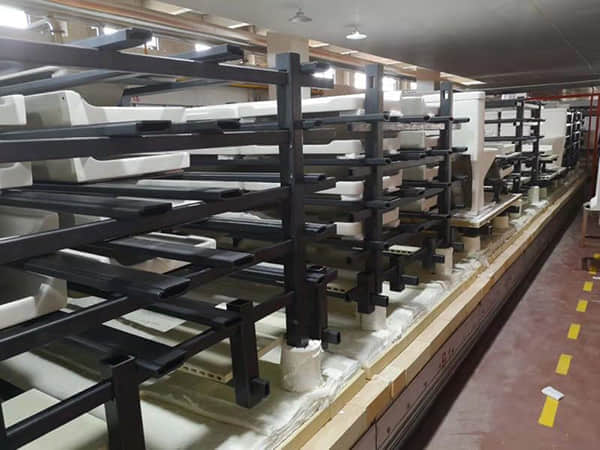Silicon carbide ceramics, known for their exceptional mechanical and thermal properties, have gained significant attention in various industries. Sintering is a vital process in the fabrication of silicon carbide ceramics, as it helps in achieving the desired density, strength, and overall performance of the material. This article aims to explore the sintering temperature of silicon carbide ceramics and its impact on the final product.

1. Silicon Carbide Ceramic Sintering:
Sintering is a process that involves the heating of a powdered material, such as silicon carbide, to a temperature below its melting point. During sintering, the particles adhere to each other, resulting in a denser and stronger ceramic material. The sintering temperature plays a crucial role in determining the final properties of the silicon carbide ceramic.
2. Factors Affecting Sintering Temperature:
Several factors influence the sintering temperature of silicon carbide ceramics, including the particle size, purity of the raw material, additives, and the desired properties of the final product. Typically, the sintering temperature ranges from 2000 to 2400 degrees Celsius for silicon carbide ceramics.
3. Reaction Bonded Silicon Carbide (RBSC):
Another method of producing silicon carbide ceramics is through reaction bonding. In this process, silicon carbide powder is mixed with a carbon source, such as graphite, and subjected to high temperatures. The carbon reacts with silicon to form silicon carbide, resulting in a dense and strong material. The sintering temperature for reaction bonded silicon carbide is typically lower than the traditional sintering process.
4. Importance of Sintering Temperature:
The sintering temperature directly affects the density, strength, and porosity of the silicon carbide ceramics. A higher sintering temperature generally leads to a denser and stronger material, but it may also result in increased grain growth and reduced mechanical properties. Therefore, finding the optimal sintering temperature is crucial to achieve the desired balance between density, strength, and other properties.
5. Experimental Determination of Sintering Temperature:
The determination of the ideal sintering temperature for silicon carbide ceramics often involves experimental trials. Researchers conduct a series of sintering experiments at different temperatures and evaluate the resulting properties of the ceramics. This iterative process helps in identifying the temperature that yields the desired characteristics.
Conclusion:
In conclusion, the sintering temperature is a critical parameter in the fabrication of silicon carbide ceramics. It significantly influences the density, strength, and other properties of the final product. By carefully selecting the sintering temperature, manufacturers can optimize the performance of silicon carbide ceramics for various applications, such as in the aerospace, automotive, and electronics industries.












